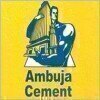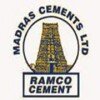Filter interviews by
ACC Shift Engineer Interview Questions, Process, and Tips
ACC Shift Engineer Interview Experiences
1 interview found
I applied via Approached by Company
(6 Questions)
- Q1. What is cement and how it prepared
- Ans.
Cement is a binding material used in construction to hold together bricks, stones, etc. It is prepared by mixing limestone, clay, and other materials.
Cement is made by heating a mixture of limestone and clay in a kiln at high temperatures
The resulting product, called clinker, is then ground into a fine powder and mixed with gypsum to create cement
Water is added to the cement to form a paste, which hardens over time to ...
- Q2. Types of cement
- Ans.
Types of cement include Portland cement, white cement, rapid hardening cement, and low heat cement.
Portland cement is the most common type used in construction.
White cement is used for architectural purposes and to create colored concrete.
Rapid hardening cement sets quickly and is used in projects with tight deadlines.
Low heat cement generates less heat during hydration and is used in large concrete structures.
- Q3. Cement temperature?
- Ans.
Cement temperature is an important factor in the production process, affecting setting time and strength of the final product.
Cement temperature should be monitored closely during production to ensure optimal conditions.
Higher temperatures can accelerate the setting time of cement, while lower temperatures can slow it down.
The ideal temperature range for cement production is typically between 90-120 degrees Celsius.
Tem...
- Q4. Material handling procedure
- Ans.
Material handling procedure involves the safe and efficient movement of materials within a facility.
Establish clear guidelines for handling different types of materials
Train employees on proper lifting techniques and equipment usage
Implement safety measures such as wearing protective gear and using designated pathways
Regularly inspect equipment and storage areas for potential hazards
Utilize technology like conveyor bel
- Q5. Storage of material
- Ans.
Proper storage of materials is crucial for maintaining quality and safety standards in engineering operations.
Materials should be stored in designated areas to prevent mix-ups and ensure easy access.
Storage areas should be organized and labeled clearly for quick identification.
Certain materials may require specific storage conditions such as temperature control or protection from moisture.
Regular inventory checks shoul...
- Q6. Safe unloading tips
- Ans.
Safe unloading tips are crucial for preventing accidents and injuries.
Always wear appropriate personal protective equipment (PPE) such as gloves, safety glasses, and steel-toed boots.
Inspect the unloading area for any hazards such as uneven ground, overhead obstacles, or slippery surfaces.
Use proper lifting techniques to avoid strain or injury - bend at the knees, keep your back straight, and lift with your legs.
Secure...
Interview questions from similar companies

I applied via Company Website and was interviewed before Jun 2020. There was 1 interview round.
Interview Questionnaire
1 Question
- Q1. About boiler and turbine
Interview Preparation Tips

Interview Questionnaire
1 Question
- Q1. Maintenance Related

Interview Questionnaire
2 Questions
- Q1. Working cement
- Q2. Cement material

I applied via Approached by Company and was interviewed before May 2022. There were 2 interview rounds.

(6 Questions)
- Q1. Mechanical engg fitter work
- Q2. Motor fitting and gearbox work
- Q3. Bearing fitting work
- Q4. Mechanical maintenacs work
- Q5. Process work kila vrm work
- Q6. Kiln mechanical

I applied via Naukri.com and was interviewed before May 2023. There were 2 interview rounds.
(2 Questions)
- Q1. Regarding roller press
- Q2. What is the V-Separator outlet temp
- Ans.
The V-Separator outlet temp refers to the temperature of the outlet stream from the V-Separator unit.
The V-Separator outlet temp is a crucial parameter in process engineering to ensure efficient separation of materials.
It is typically measured using temperature sensors located at the outlet of the V-Separator unit.
The outlet temperature can vary depending on the type of material being separated and the operating condit...
(1 Question)
- Q1. Salary negotiation

I applied via Walk-in and was interviewed in Jan 2024. There was 1 interview round.
(4 Questions)
- Q1. Basics mechanical question
- Q2. What is a thermodynamics
- Ans.
Thermodynamics is the branch of physics that deals with the relationships between heat and other forms of energy.
Thermodynamics studies the transfer of energy in the form of heat and work.
It involves concepts like entropy, temperature, and energy conversion.
Examples include the efficiency of engines, refrigeration systems, and phase transitions in materials.
- Q3. Third law of motion
- Ans.
The third law of motion states that for every action, there is an equal and opposite reaction.
States that when one object exerts a force on a second object, the second object exerts an equal and opposite force on the first object
The forces always occur in pairs
Examples include a rocket pushing against the ground to lift off, or a person pushing against a wall
- Q4. Types of bearing
- Ans.
Types of bearings include ball bearings, roller bearings, plain bearings, and fluid bearings.
Ball bearings: use balls to reduce friction between two surfaces
Roller bearings: use cylindrical rollers to reduce friction
Plain bearings: have a simple surface with no moving parts
Fluid bearings: use a thin layer of liquid or gas to reduce friction


(2 Questions)
- Q1. Types of Gear box,what about conveyors?
- Ans.
There are various types of gearboxes such as manual, automatic, CVT, DCT, etc. Conveyors can use gearboxes for power transmission.
Types of gearboxes include manual, automatic, CVT, DCT, etc.
Gearboxes are used for power transmission in conveyors.
Conveyor gearboxes can be worm gearboxes, helical gearboxes, etc.
- Q2. Describe briefly about conveyors..
- Ans.
Conveyors are mechanical devices used to transport materials from one location to another.
Conveyors are used in various industries such as manufacturing, mining, and agriculture.
They can be powered by electricity, gravity, or manually.
Types of conveyors include belt, roller, screw, and chain conveyors.
Conveyors can be customized to fit specific needs, such as incline or decline angles and speed.
They are designed to inc...
Interview Preparation Tips
- Project Management

(1 Question)
- Q1. Related to whrs project 1. how to execute work activities 2. Old company role 3. Ibr documentation 4. Technical specifications of Whrs as for turbine erection, acc & boiler erection sequence etc.
Interview Preparation Tips

I applied via Approached by Company and was interviewed in Sep 2023. There were 2 interview rounds.

(7 Questions)
- Q1. Questions about machines engine, capacity details in Hydraulic, electronics and pneumatic system, personal profile, previous company resign reasion, salary, etc.
- Q2. Crane tfc280 engine details Jcb backholoder control valve diagram Cranes capacity and boom attachments Batching plant working details Surfaceminer drum width How much Hydraulic pumps and thier capacity
- Q3. Hydraulic knowledge in details
- Q4. Working profile
- Q5. How to handle the manpower.
- Ans.
Manpower can be handled by effective communication, delegation, training, and motivation.
Effective communication is key to ensure everyone is on the same page and understands their roles and responsibilities.
Delegation of tasks based on individual strengths and skills can help in maximizing productivity.
Providing training and development opportunities can improve skills and knowledge within the team.
Motivating employee...
- Q6. Hydraulic details knowledge
- Q7. How to handle manpower.
- Ans.
Manpower can be effectively handled by proper planning, communication, training, and motivation.
Develop a clear organizational structure and hierarchy
Communicate effectively with employees to ensure understanding of roles and responsibilities
Provide necessary training and development opportunities to enhance skills and knowledge
Motivate employees through recognition, rewards, and a positive work environment
Interview Preparation Tips
- Technical knowledge details
Good communication skills
ACC Interview FAQs
Tell us how to improve this page.
ACC Interviews By Designations
- ACC Assistant Manager Interview Questions
- ACC Deputy Manager Interview Questions
- ACC Senior Executive Interview Questions
- ACC Teritory Sales Officer Interview Questions
- ACC Senior Sales Executive Interview Questions
- ACC Engineer Interview Questions
- ACC Accountant Interview Questions
- ACC Analyst Interview Questions
- Show more
Interview Questions for Popular Designations
- Shift Incharge Interview Questions
- Electrical Shift Engineer Interview Questions
- Shift Incharge Engineer Interview Questions
- Production Shift Incharge Interview Questions
- Shift Supervisor Interview Questions
- Electrical Engineer Interview Questions
- Shift Manager Interview Questions
- QA QC Engineer Interview Questions
- Show more
ACC Shift Engineer Interview Process
based on 1 interview
Interview experience
Interview Questions from Similar Companies
Fast track your campus placements
ACC Shift Engineer Reviews and Ratings
based on 1 review
Rating in categories
|
Assistant Manager
376
salaries
| ₹4 L/yr - ₹13.8 L/yr |
|
Manager
202
salaries
| ₹9.9 L/yr - ₹34 L/yr |
|
Senior Executive
159
salaries
| ₹2.8 L/yr - ₹9 L/yr |
|
Deputy Manager
149
salaries
| ₹6.7 L/yr - ₹19.6 L/yr |
|
Sales Executive
129
salaries
| ₹1.2 L/yr - ₹5.6 L/yr |

Ambuja Cements

UltraTech Cement

Shree Cement

The Ramco Cements
- Home >
- Interviews >
- ACC Interview Questions >
- ACC Shift Engineer Interview Questions
























